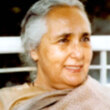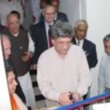Ashoka: the search for India's lost emperor
Description
More Details
Also in this Series
Published Reviews
Choice Review
Beginning with accounts of the discovery in the late 1600s of several monumental stone pillars throughout India bearing inscriptions in a mysterious language, Allen, an independent historian, masterfully tells the story of how Ashoka, ruler of the Mauryan empire in the third century BCE, went from an almost forgotten figure in Indian history to recognition as the first ruler to bring most of the Indian subcontinent under his sway. These inscriptions, along with similar inscriptions on rock faces in various locations, proved to be edicts of Ashoka in which he describes his commitment to tolerance, persuasion, and nonviolence as principles for ruling his people and expanding his empire. Allen describes additional discoveries down to recent times, including many that document the role of Ashoka, an adult convert to Buddhism, in transforming Buddhism from a local sect into a major world religion. Written in an engaging semi-popular style that often reads like a mystery novel, this book is well documented and profusely illustrated. Anyone interested in the history of India should read this book, from general readers to experts. Summing Up: Highly recommended. All levels and libraries. W. Kotter Weber State University
Library Journal Review
Historian Allen (The Buddha and Dr Fuhrer)Åhas produced a monumental account of the search for a lost and forgotten emperor. British antiquarians of the 18th and 19th centuries were puzzled when they found inscriptions in a forgotten script on rock faces and pillars strewn across the length and breadth of India. With painstaking research spanning two centuries, the pieces finally fell into place like a jigsaw puzzle, and the rock edicts and pillars were deciphered and connected to Emperor Ashoka. Born in the fourth century B.C.E., Ashoka, writes Allen, "forged India into a nation state" and was a "pioneer of nonviolence." Excavations of archaeological remains of the period are ongoing. This book is as much about the antiquarians-their labors, rivalries, and sometimes serendipitous discoveries-as it is about Emperor Ashoka. VERDICT Well researched with 25 black-and-white photographs, a detailed appendix containing a translation of the rock inscriptions, and extensive notes, this is a fascinating read. Strongly recommended for academic libraries and collections dealing with history, archaeology, Buddhism, and South Asia.-Ravi Shenoy, Naperville, IL (c) Copyright 2012. Library Journals LLC, a wholly owned subsidiary of Media Source, Inc. No redistribution permitted.
Kirkus Book Review
A prolific chronicler of India, Allen (Kipling Sahib: India and the Making of Rudyard Kipling, 2009, etc.) shows just how addictive the country can be. The author's delight is obvious as he investigates the search for the great Indian leader, Ashoka. This is not so much a biography as a chronicle of that quest, and the details of the search become tedious. India-born and descended from generations serving the British Raj, Allen is well-acquainted with the archaeological sites of the stupas, rock and pillar edicts and Elephant Rocks. Throughout the 19th century, the Asiatic Society of Bengal archived copies of the great edicts Ashoka ordered carved there. These massive tablets pictured his history, explained Buddhism and addressed schisms that occurred during his reign. His revolutionary edicts enabled Ashoka to conquer by Dharma, undermining the authority of the Brahman by calling for religious tolerance and the banning of animal sacrifice. In order to understand the edicts, the first job was to decipher the language as it evolved through a number of influences. Nowhere does Allen address the idea that few might have been able to read any language in the 3rd century B.C. Admittedly, many readers will have limited tolerance for the detailed etymology and philology of the Greek, Pakrit, Sanskrit and Pali names for sites and characters. The author has a wealth of material available in the writings of British, Indian and Chinese who came before, helping him to establish the beginnings of Buddhism and its spread throughout the subcontinent. Allen's enthusiasm and love for India are obvious; his waxing eloquent over the 23 volumes of Archaeological Survey Reports by Alexander Cunningham indicates a devotion few of us could share. Lovers of intense research will enjoy this book. Readers with no sense of Indian history or geography and little archaeological curiosity will get bored.]] Copyright Kirkus Reviews, used with permission.
Library Journal Reviews
Historian Allen (The Buddha and Dr Führer) has produced a monumental account of the search for a lost and forgotten emperor. British antiquarians of the 18th and 19th centuries were puzzled when they found inscriptions in a forgotten script on rock faces and pillars strewn across the length and breadth of India. With painstaking research spanning two centuries, the pieces finally fell into place like a jigsaw puzzle, and the rock edicts and pillars were deciphered and connected to Emperor Ashoka. Born in the fourth century B.C.E., Ashoka, writes Allen, "forged India into a nation state" and was a "pioneer of nonviolence." Excavations of archaeological remains of the period are ongoing. This book is as much about the antiquarians—their labors, rivalries, and sometimes serendipitous discoveries—as it is about Emperor Ashoka. VERDICT Well researched with 25 black-and-white photographs, a detailed appendix containing a translation of the rock inscriptions, and extensive notes, this is a fascinating read. Strongly recommended for academic libraries and collections dealing with history, archaeology, Buddhism, and South Asia.—Ravi Shenoy, Naperville, IL
[Page 76]. (c) Copyright 2012. Library Journals LLC, a wholly owned subsidiary of Media Source, Inc. No redistribution permitted.




























